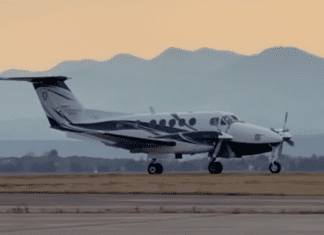
This post is also available in:
 עברית (Hebrew)
עברית (Hebrew)
Among the many gadgets a modern foot soldier carries, their rifle is one of the most important. The US military puts a premium on small arms training, and in an effort to reduce costs is eyeing more investment in virtual reality. New small arms trainers equipped with high-fidelity simulations and realistic weaponry could give soldiers and Marines the ability to hone their skills well before they ever set foot on a battlefield, according to nationaldefensemagazine.com.
The Army, for example, has listed the development of the synthetic training environment as one of its top modernization priorities under the soldier lethality category. Developers of the STE — which encompasses all aspects of training for troops — are working closely with the Army’s soldier lethality cross-functional team, noted Maj. Gen. Maria Gervais, head of the team for STE and the deputy commanding general of the Combined Arms Center-Training.
Together “we have put a focused effort to increase the lethality of our close-combat soldiers and Marines,” she said during remarks at the Association of the United States Army’s annual conference in Washington, D.C. “We’ve done that in a couple of ways: No. 1 is an immediate training capability — a squad advanced marksmanship trainer — to get that out in the field to our close-combat soldiers so they could start training immediately.”
Another is the development of a squad immersive virtual trainer that the service hopes to field much sooner than its anticipated 2025 timeframe, she said. “[We want to] get after what the secretary of defense has challenged us with — and that is to provide a simulation training capability to our close combat soldiers … in order to get the sets and the reps … and to execute 25 bloodless battles before the first [real] battle,” she said. Brig. Gen. Michael E. Sloane, program executive officer for simulation, training and instrumentation, or PEO STRI, said the Army wants to work closely with industry to develop new technologies. Before soldiers participate in live-fire training, they take part in what is known as “dry-fire” training where they learn the basic fundamentals of shooting. Now, however, the service can use simulated training supplied by EST II in between those two phases, Ayala said. “It augments their training by using compressed air and simulated firearms in a virtual environment,” he said.
The system consists of large screens, a projector and a tethered rifle, he said. The simulator projects a virtual 3D image of a range and targets pop up and move. “We can create any course of fire that exists in real life,” he added. It also provides users with analytic information that can be used to track a soldier’s performance and score, Ayala said.

























